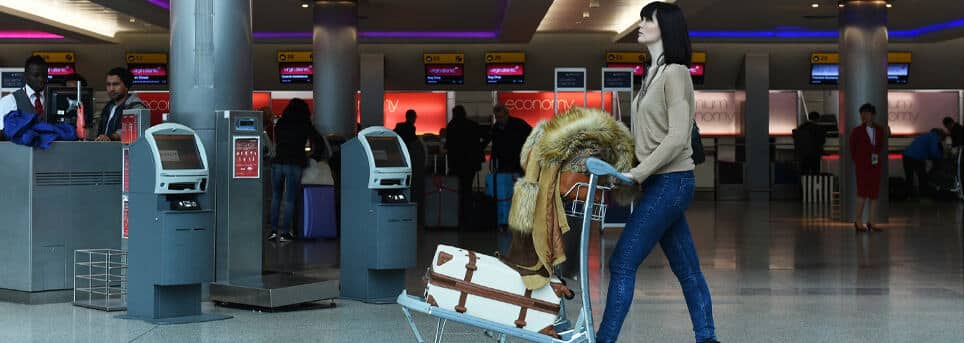PRE COVID-19
The Challenge
ARUP instructed by Heathrow Airport Limited (HAL), commissioned Gebler Tooth Architects (GTA) to undertake an architectural and volumetric study, in which GTA asked AiQ Consulting to undertake a mathematical study of the airport baggage trolleys. This work was part of a larger capacity study of LHR Terminal 5 Arrivals Reclaims to understand whether the capacity of Arrivals Hall could be increased.
By enlarging the existing carousels to meet the prospect of increasing capacity demands, we began to analyse the storage of baggage trollies between reclaims, as a way of increasing capacity.
With the maximum stock of trollies in arrivals at the beginning of the day, it was difficult to introduce additional capacity without impact on either space or trolley demand. Increasing capacity would decrease space for trollies when demand for them would obviously be higher.
Therefore, AiQ’s challenge was to analyse the movements of these airport baggage trollies to inform the client, enabling them to realise the most effective way of increasing capacity without impacting on available space or passenger experience.
The Solution
Using our unique 2½D modelling software, TransvisionAir®, we are able to simulate the movements of every passenger, bag and vehicle in an airport. From when passengers check-in, to the movement of Premium or PRM buggies, to coaches, parking, and when passengers visit any retail or food concession; we have the unique holistic knowledge that can enable us to accurately predict demand across the terminal.
Applying this model to the movement of baggage trollies, to the benefit of our client, we created a mathematical model that
• Understood the increase in trolley demand
• Analysed the impact of the area of storage in Arrivals
If that storage didn’t exist, we could then look at implementing a different process to hold trollies in different areas around the Terminal where they may be used more effectively.
The circulation of baggage trollies in airports has a particular nature. As a rule, they are used more at Arrivals than Departures, as passengers are happy to take their own bags with the prospect of checking them in fairly soon after arriving at the airport. However, when passengers are arriving, there is a greater need for trollies to move baggage to car parks, etc., after possibly a long flight. We were able to calculate and predict these movements of baggage trollies around the airport, in order for the client to understand storage and demand.
The Benefit
Using AiQ Consulting gave our client the holistic view they needed of the impact of baggage trolley use across the entire terminal, not just the Arrival and Baggage Reclaim area. We were able to use our experience and technical expertise to enable them to fully realise the impact of baggage trollies and their storage on their future plans for expansion, and our model gave them the detailed insight they needed to make a decision.
- Sanitisation strategy as standard procedure
- Use of data and simulation to provide effective capacity planning
- Smooth efficient operations
- Increased capacity utilising Terminal and Passenger Behaviour
- Evaluation of spatial and capacity options
- Demand analysis to support decision making
- Efficient stakeholder management
- Prevented unnecessary investment costs.
- Resource utilisation increased
- Improved passenger customer service and airport experience
DURING AND POST COVID-19
Whilst the modelling of baggage trolleys movements has been carried out on pre-Covid-19 scenarios, as passengers traffic starts to creep back, resource allocation will be paramount to ensure smooth efficient operations and outstanding passenger experience.
In this context, sanitisation of baggage trolleys is a key operation affecting availability and movement patterns. While being sanitised, trolleys need to be put off-service, therefore a detailed demand analysis will provide decision support for sanitisation planning. Furthermore, a safe and clean storage area to carry out the sanitation process is necessary as sanitisation becomes a standard procedure in the near future.

